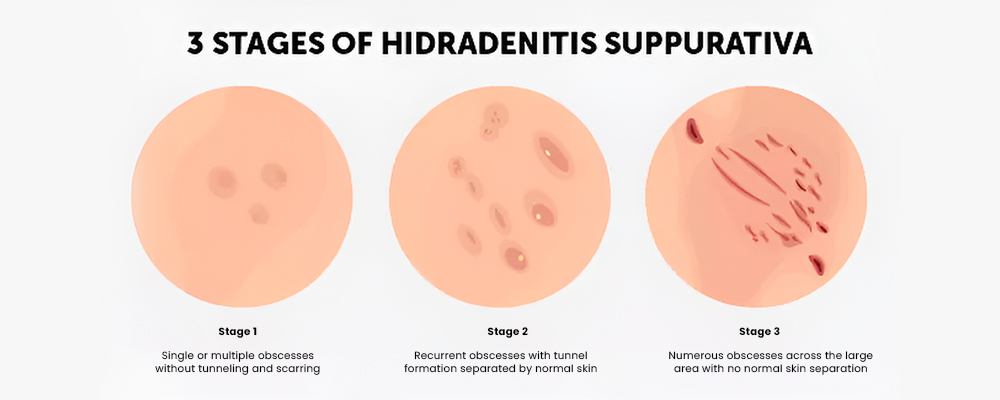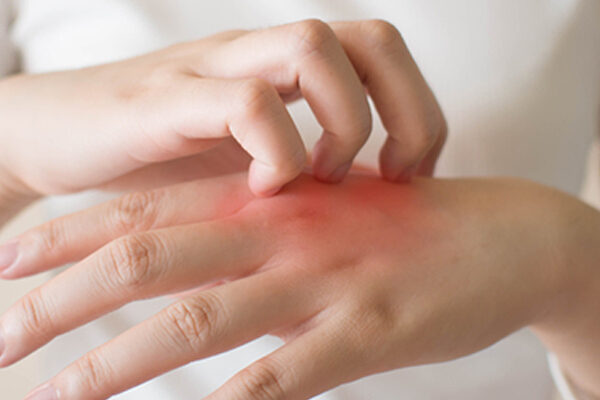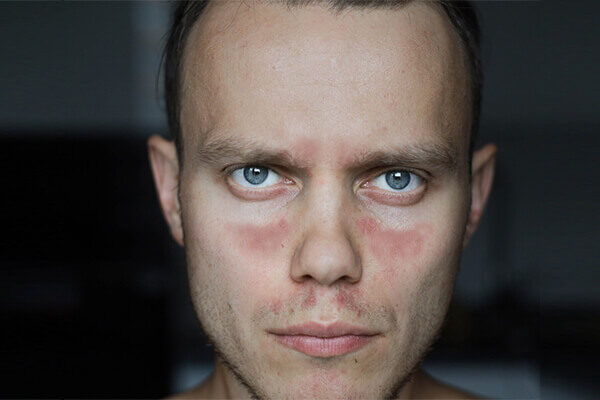Updated on September 28, 2023
Overview
Hidradenitis Suppurativa (HS) is a chronic skin condition that causes lesions, which are painful nodules, ‘boil-like’ lumps, or abscesses. These abscesses are not only painful, but they can also burst and leak pus with an unpleasant odor. Hidradenitis suppurativa stage 1 is the mildest form of the disease.
The condition frequently goes undiagnosed or misdiagnosed due to its rarity and lack of awareness. It primarily affects areas where skin rubs together, such as the armpits, groin, buttocks, and under the breasts. HS typically progresses in stages, each with its own set of symptoms and challenges.
To classify HS, doctors use a staging system known as the Hurley Staging System. There are three stages altogether. The earlier we detect HS, the sooner we can begin treatment to keep the condition from progressing to later stages. This article will provide an in-depth understanding of hidradenitis suppurativa stage 1 and outline strategic approaches to effectively manage it.
Understanding Hidradenitis Suppurativa (HS)
HS is characterized by the formation of painful, recurring, and inflamed nodules, abscesses, and tunnels beneath the skin’s surface. These lesions are frequently accompanied by pus drainage, odor, and scarring. It can have a devastating effect on a person’s quality of life, causing physical discomfort, emotional distress, and social isolation.
HS usually appears after puberty and lasts for the rest of a person’s life, with varying degrees of severity. It is more common in women and is frequently linked to other health issues such as obesity, metabolic syndrome, and Crohn’s disease. The exact cause of HS is unknown, but it is thought to be a combination of genetic, immune system, and environmental factors.
Staging of Hidradenitis Suppurativa
Accurate staging is essential because it helps determine the best treatment approach.
Image source, here!
Stage I: The mild stage, characterized by:
Abscesses, single or multiple: Small, throbbing lumps or boils.
Mild itching or burning may occur on occasion.
No significant scarring: There is no obvious scarring or tunnel formation.
Stage II: Following symptoms worsen:
Multiple, recurring abscesses are referred to as recurrent abscesses.
Tunnel formation: Painful sinus tracts connect these abscesses.
Scarring: Moderate to severe scarring.
Stage III: Severe involvement:
Multiple areas are affected by widespread abscesses.
Fistulas are abnormal passageways that drain pus continuously.
Chronic inflammation causes excruciating pain and discomfort.
Hidradenitis Suppurativa Stage 1: What to know
The first stage of hidradenitis suppurativa is stage 1. It is characterized by the presence of solitary or multiple abscesses in the affected areas, with little or no tunnel formation or scarring.
Here are some key points to remember about HS Stage 1:
Hidradenitis Suppurativa Stage 1 Symptoms
Solitary or Multiple Abscesses:
Stage 1 hidradenitis suppurativa is distinguished by the presence of small to moderately sized abscesses in the affected areas. These abscesses are painful, and they may appear as raised lumps or boils beneath the skin. They can vary in size and appear and disappear over time.
Occasional Discomfort:
Patients with hidradenitis suppurativa stage 1 may experience mild discomfort in the affected areas, such as itching, burning, or aching. The pain, however, is generally less severe than in the later stages of the condition.
No significant scarring:
Stage 1 HS is distinguished by the absence of extensive scarring. While there may be some mild scarring or discoloration at the site of previous abscesses, it is not as noticeable as it is in the later stages of the disease.
Hidradenitis Suppurativa Stage 1 Location
Abscesses from hidradenitis suppurativa stage 1 typically occur where the skin rubs together or sweat glands are more concentrated. Typical locations include:
- Armpits: In stage 1, the axillary (armpit) region is a common location for abscesses.
- Groin: The inguinal (groin) region may be affected, resulting in discomfort and pain.
- Buttocks: Abscesses can form in the gluteal (buttocks) region.
- Under the Breasts: HS can occur in the inframammary fold (under the breasts) in women.
Hidradenitis Suppurativa Stage 1 Disease Progression
Hidradenitis suppurativa stage 1 is the initial stage, and it may remain stable or progress to more advanced stages over time. The disease’s progression varies from person to person and is influenced by a variety of factors such as genetics, lifestyle, and treatment.
Misdiagnosis of Hidradenitis Suppurativa Stage 1
The first stage of hidradenitis suppurativa is frequently misdiagnosed as a regular boil or a localized skin infection. It is occasionally misdiagnosed as ingrown hair or a regular skin abscess. As a result, it may be treated incorrectly. It is important to notify the doctor if one develops boil-like lesions in any of the areas listed above. If the lesions appear on a regular basis, they may have stage 1 hidradenitis suppurativa. With effective treatment, an early diagnosis could prevent the condition from progressing further.
Despite the fact that stage 1 hidradenitis suppurativa is the mildest form of the disease, it can be extremely painful. Draining lesions can also be problematic.
Strategic Approach to Manage Hidradenitis Suppurativa Stage 1
There is no cure for HS, but there are many treatments that can help you manage your symptoms. Dermatologists recommend treatment options based in part on stage. Other factors that may be considered include:
- The degree of symptom severity
- The total number of lesions
- General health and medical background
To effectively manage hidradenitis suppurativa stage 1, a multifaceted approach that addresses both the physical and emotional aspects of the condition is required. Here are some key strategies for dealing with Stage 1 HS:
Medical Examination and Diagnosis
Early detection is critical for effective treatment. Consult a dermatologist who is familiar with the treatment of HS for a definitive diagnosis and to determine the stage of your condition.
Lifestyle Modifications
Several dietary and lifestyle changes can help alleviate symptoms and prevent flare-ups in stage 1:
1- Maintain Good Hygiene
To reduce the risk of infection, keep the affected areas clean and dry.
To avoid skin irritation, use gentle, fragrance-free cleansers.
2- Wear Loose-Fitting Clothes
To reduce friction and sweating in affected areas, wear breathable, loose-fitting clothing.
Avoid wearing clothing that is too tight, as this can aggravate irritation.
Explore Topical Treatments
Topical treatments are frequently the first line of defense against HS symptoms in stage 1. These could include:
1- Antibacterial Cleansers
To reduce bacterial colonization in the affected areas, use antibacterial washes or soaps recommended by the healthcare provider.
2- Antibiotics applied topically
Topical antibiotics can aid in the treatment of inflammation and infection.
Pain Control
Over-the-counter pain relievers (NSAIDs, or nonsteroidal anti-inflammatory drugs) can provide temporary relief. When prescription pain relief is required, consult with a healthcare provider.
Consider Diet and Nutrition
While there is no specific HS diet, some people report that symptoms improve with dietary changes. Under the supervision of a healthcare provider, investigate potential triggers and consider dietary changes.
Take Emotional Support
HS can have a significant impact on one’s mental health. Seek help from therapists, support groups, or counseling to deal with the emotional challenges that come with the condition.
Follow-ups on a Regular Basis
Maintain close contact with dermatologists for ongoing evaluations.
Regular check-ins aid in tracking progress and adjusting treatment plans as needed.
Avoid Self-popping Abscesses
Never try to pop or drain abscesses at home because this can exacerbate infection and scarring.
Medications (uncommon in stage 1)
While medications such as corticosteroids or biologics are less common in stage 1, they may be considered in severe cases or when other treatments are ineffective.
Summary
Hidradenitis suppurativa stage 1 is characterized by painful abscesses that do not result in significant tunnel formation or scarring. Early diagnosis, as well as a comprehensive management strategy that includes lifestyle changes, topical treatments, and emotional support, are critical for improving quality of life and preventing progression to more severe stages.
Seeking medical advice to get a customized treatment plan and effectively manage your HS is essential for one dealing with this condition. There are various potential treatment options available to help manage this difficult condition.






